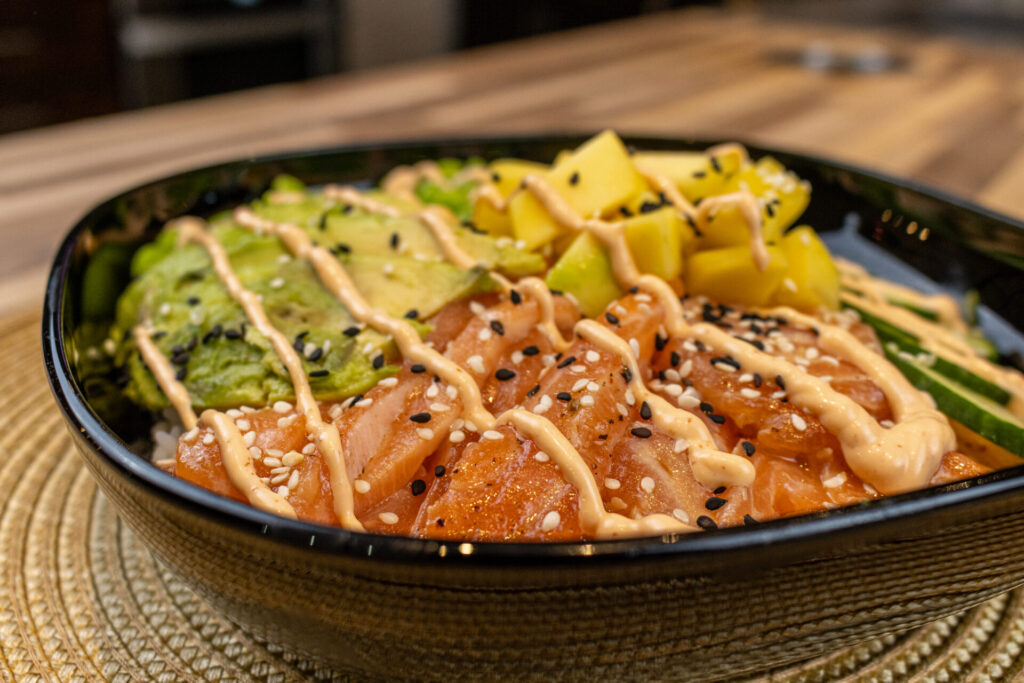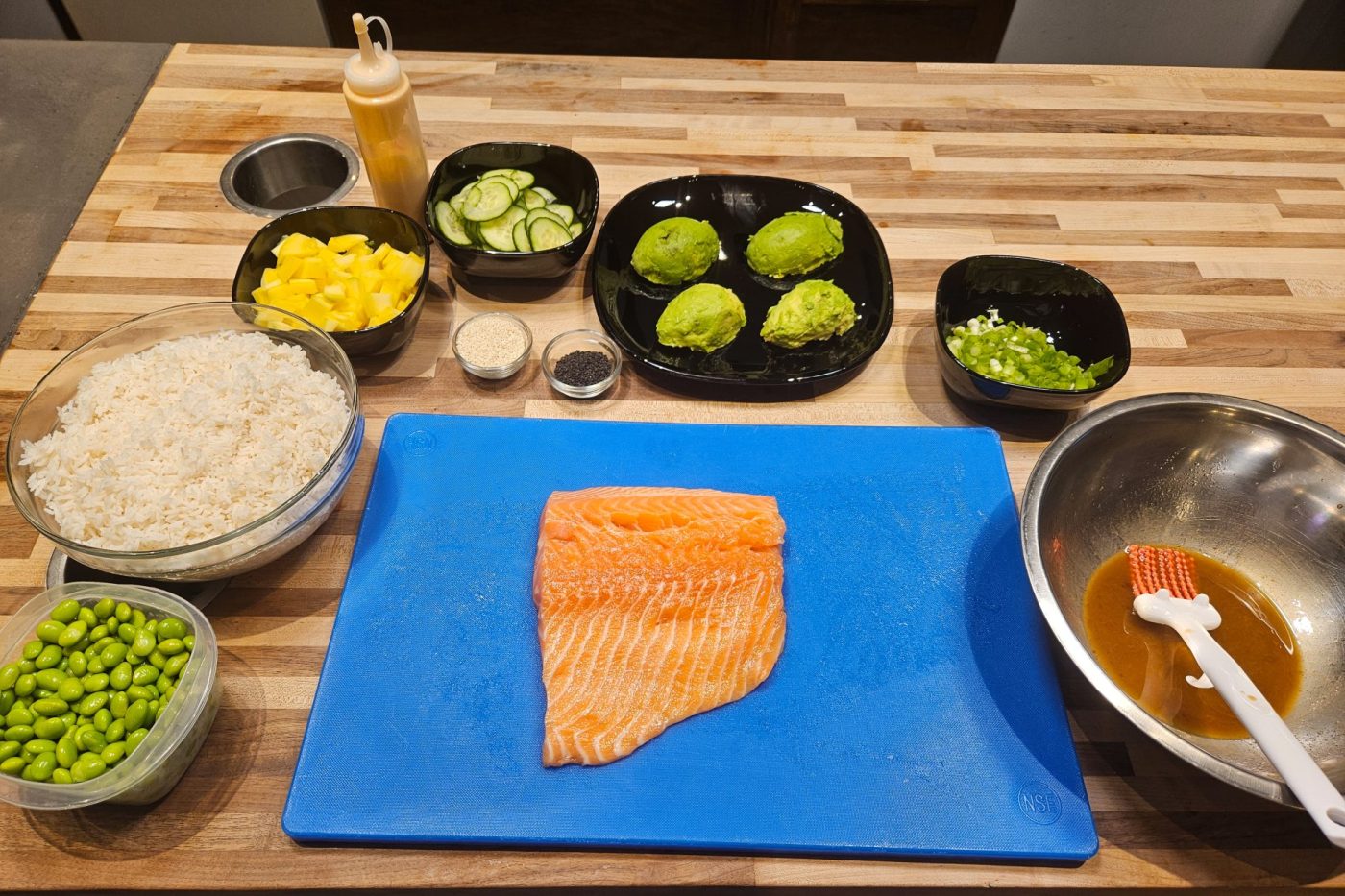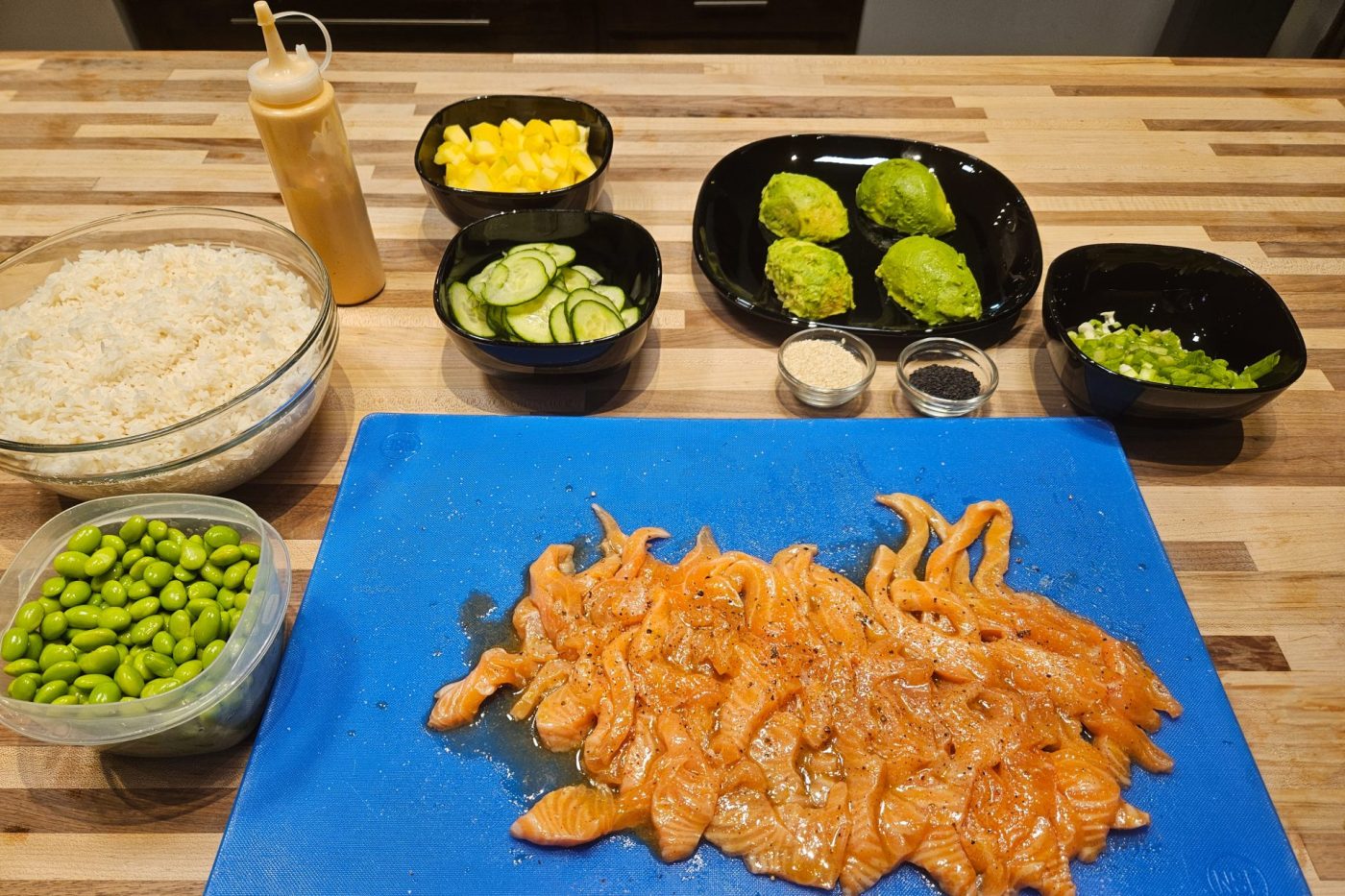* Optionally substitute with any rice you have available.
** Fish for this is best to be fresh and not previously frozen. That is very important for the right flavor. Consumption of raw fish is at your own risk. To try to prevent any potential health problems, use only fish from verified suppliers and only fish that is fresh and properly stored. Optionally, you can partially or even fully cook fish if it better suits your preferences. Tuna is a more common fish for a poke bowl, but salmon is a very good option, too. On top of that, it is usually much easier to find good fresh and not previously frozen salmon than tuna. If you have access to both, choose what you like. Be aware that many stores around sell defrosted, previously frozen fish (look on the label for the term “previously frozen” and/or ask the shop assistant to make sure).










Share
Click on the icons below to share "Title of the item to share"